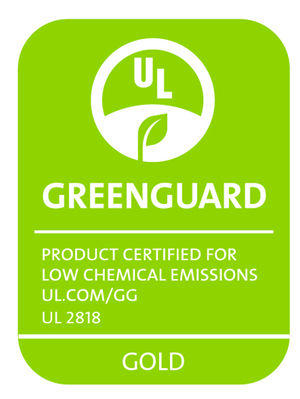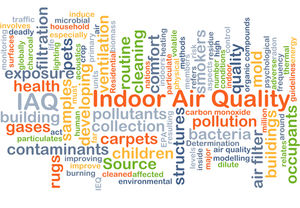Guest blog courtesy of UL Environment
This post discusses UL GREENGUARD Certification, what it means, and how selection of certified products can impact the indoor air quality of buildings.
In recent years, we have seen an increase in awareness of indoor air quality (IAQ) and other sustainability and human health issues. The quality of the air we breathe indoors is critical, as most people spend upwards of 90% of their time indoors.
Ushered in with the post-WWII era, chemicals of all kinds have been used to create a vast array of products that we use and enjoy. Of the 87,000 chemicals registered for commerce in the United States, only one-tenth have been tested for potential health effects.¹
These chemicals can combine and are emitted from the materials that contain them, resulting in volatile organic compounds (VOCs) floating in the air we breathe, potentially causing risk to human health.
Many of Armacell’s flexible insulation products are UL GREENGUARD Gold Certified, signaling that their materials are low-VOC emitting and suitable for indoor environments. In this blog, we will discuss UL GREENGUARD Certification, why it’s important, and what it means to engineers when selecting products.

What is UL GREENGUARD?
Developed more than 15 years ago, UL GREENGUARD is a trusted name in certification for low-VOC emitting products. Products that have earned UL GREENGUARD Certification have met some of the world’s most rigorous and comprehensive standards for low emissions of VOCs. Product testing is conducted in dynamic environmental chambers where air flow is modeled to simulate actual product use. Measured emission levels are converted by calculation to air concentrations representing what a person will actually breathe. These concentrations are determined based on expected use of the product, amount of product, its application process and the indoor building conditions, including building volume and fresh air exchange rate.
All certified products are tested in dynamic environmental chambers following defined methods developed for specific product types. Measurements for chemical and particle emissions are taken at intervals during testing.
Most building materials and furnishings are required to meet allowable emission levels within 7 to 14 days of installation. Other products and processes, including operating electronics and cleaning systems, must meet allowable levels during actual use or the application process.
UL GREENGUARD Certified products are audited each year to ensure that they continue to meet these low-emitting standards.

What is the significance to building projects?
HVAC systems play a central role in supporting the comfort and safety of indoor environments.
As a result, it is particularly important that HVAC components contribute minimally to indoor air pollution. UL GREENGUARD Certified HVAC components, including mechanical insulation, ensure that they are contributing minimally to indoor air pollution and are low-emitting. In many cases, this attention to indoor air quality is required and/or rewarded by green building programs such as the US Green Building Council’s Leadership in Energy and Environmental Design (LEED®).
Here are some of the many benefits of using UL GREENGUARD Certified products.
- Help create safer indoor environments, happier, healthier occupants and more satisfied building owners/managers.
- Earn credits toward your green building projects: UL GREENGUARD Certification is recognized by more than 400 green building codes, standards, guidelines, procurements policies, and rating systems.
- Avoid problems, expensive reconstruction associated with buildings/systems that trigger health and odor problems.
- Enjoy peace of mind of knowing the products contribute to better indoor air quality.
The selection of low-emitting products is a fundamental tenet of sustainable building, and also prevents potential problems down the road. Even if you are not currently involved with a green building project, it’s worth considering selecting low-emitting building materials for the sake of the building and its occupants. Then you can breathe easy knowing that you are taking a step to positively benefit human health.
For more information about UL Environment and GREENGUARD, visit spot.ul.com/greenguard.
